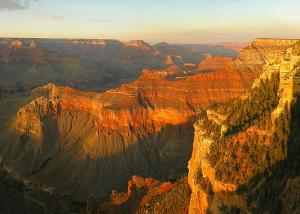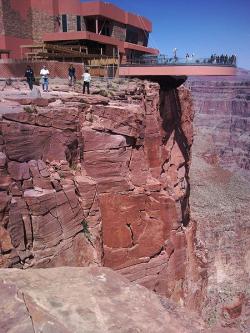
In 1908 President Theodore Roosevelt proclaimed that the Grand Canyon was “one great sight every American should see”.
The Hualapai Indian tribe agrees.
Although they are one among the several tribes with sacred and historical ties to this geological marvel, the Hualapai own the largest portion of the Grand Canyon outside of the Grand Canyon National Park. With the stewardship of nearly one million acres of the southwestern Grand Canyon and 108 miles of the Colorado River, the Hualapai share an intimate view of their sacred homeland with more than 3,000 people a day.
“The majority of visitors still think [Grand Canyon West] is owned by the National Park system,” says Robert Bravo, Operations Manager Support Services at Grand Canyon West. “We want the world to know that it’s tribal land. It gives us a sense of pride.”
Even with two decades of development, Grand Canyon West is still relatively unknown compared to its National Park counterparts. However, the completion of the impressive glass Skywalk in 2007 has put the Hualapai Indians and Grand Canyon West on the map for good.
Located just two and a half hours from Las Vegas and five hours northeast of the South Rim, the isolated West Rim draws crowds seeking unparalleled Grand Canyon views and a Native American perspective on the sacred gorge.
A comfortable, air-conditioned bus shuttles visitors from the busy hub at Grand Canyon West Airport to the West Rim’s two viewpoints—Eagle and Guano Points, and to Hualapai Ranch, an Old West town that looks straight out of a movie set.
The first stop on the shuttle route is Eagle Point, a stunning and spiritually significant viewpoint, which takes its name from a large, stone eagle with its wings spread across the canyon walls. Unlike the viewpoints at Grand Canyon National Park, this point is unobstructed by barriers—both of stone and of people—allowing a pristine look into the canyon from its very edge.
 Eagle Point is also home to the famous Skywalk, a cantilever-shaped glass bridge suspended 4,000 feet above the Colorado River and extending 70 feet from the edge of the canyon rim. Nearby, a short trail takes visitors to the Indian Village, where educational displays uncover the culture of several Native American tribes. Intertribal, powwow-style dance performances entertain visitors at the nearby amphitheater.
Eagle Point is also home to the famous Skywalk, a cantilever-shaped glass bridge suspended 4,000 feet above the Colorado River and extending 70 feet from the edge of the canyon rim. Nearby, a short trail takes visitors to the Indian Village, where educational displays uncover the culture of several Native American tribes. Intertribal, powwow-style dance performances entertain visitors at the nearby amphitheater.
“We are promoting the Indian culture,” says Bravo. “We now have daily cultural performances with dancers from all over the United States and Canada.”
The second developed viewpoint at Grand Canyon West is Guano Point, named after a bat guano-mining operation (procuring bat excrement from a cave on the other side of the canyon for use in the manufacture of fertilizers and gunpowder) from the 1950s. The mining has long since ceased, but the cable house and the steel tower are still standing, as a testament to the varied functions the canyon has performed over the years. Visitors get a chance to refuel for a short hike along the rim with a barbeque lunch served right at the viewpoint.
“More than 200 tribal employees work at Grand Canyon West,” says Hualapai Chairman Wilfred Whatoname, Sr. “It has gone from a small operation to a major tribal enterprise.”
In response to tourist requests for a wider range of activities, the Hualapai have added a multitude of tour options, unavailable anywhere else in the canyon. Optional add-ons include Hummer tours over remote, rough-cut backroads, horseback trail rides to Quartermaster Point, motorized, smooth-water pontoon rides, wild, whitewater oar adventures, and helicopter rides into the canyon depths.
It hasn’t always been easy though. Even with only 2,400 tribal members, the Hualapai have disputed among themselves over the pros and cons of opening their homeland to outsiders.
“Our elders had the original vision of bringing people out here, to share it with the world,” says Bravo. “Now we are doing that.”
Hualapai Chairman Wilfred Whatoname, Sr. agrees.
“Our forefathers lived along these waters. The Grand Canyon is our starting point,” says Whatoname, Sr. “The development of this attraction is significant for our people. It benefits our tribal economy and brings interest from people worldwide.”
Although the “People of the Tall Pines” are quiet and private people, they will share some of their stories to those who take the time to listen. They will tell you tales of beauty and peace, others of suffering and sorrow. In the meantime, the Hualapai continue to carve out their place in a modern worldview, while preserving and sharing their rich cultural heritage to those seeking another side of the “one great sight which every American should see.”
